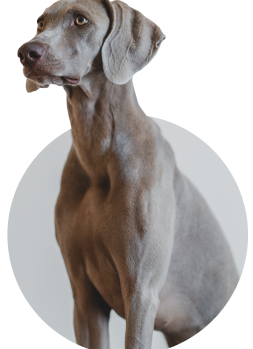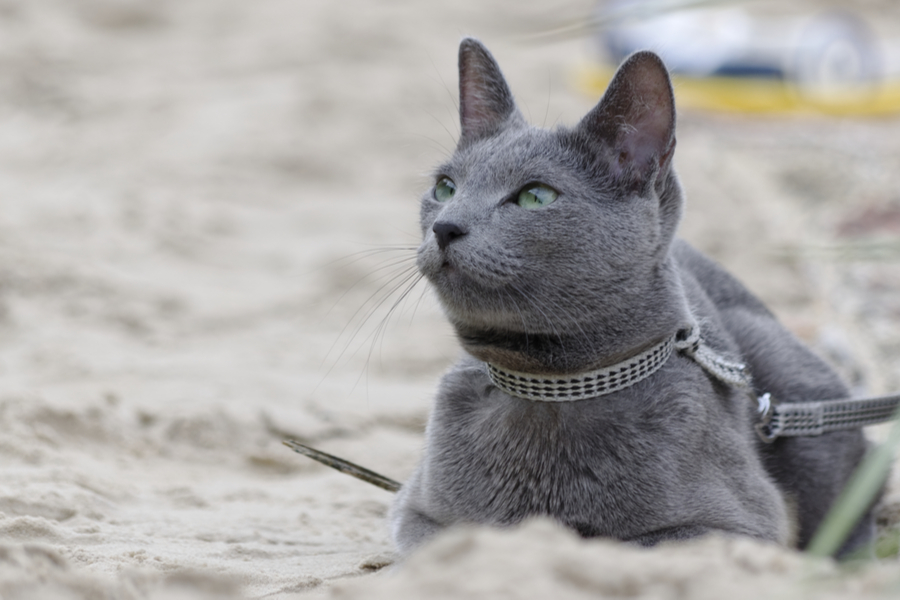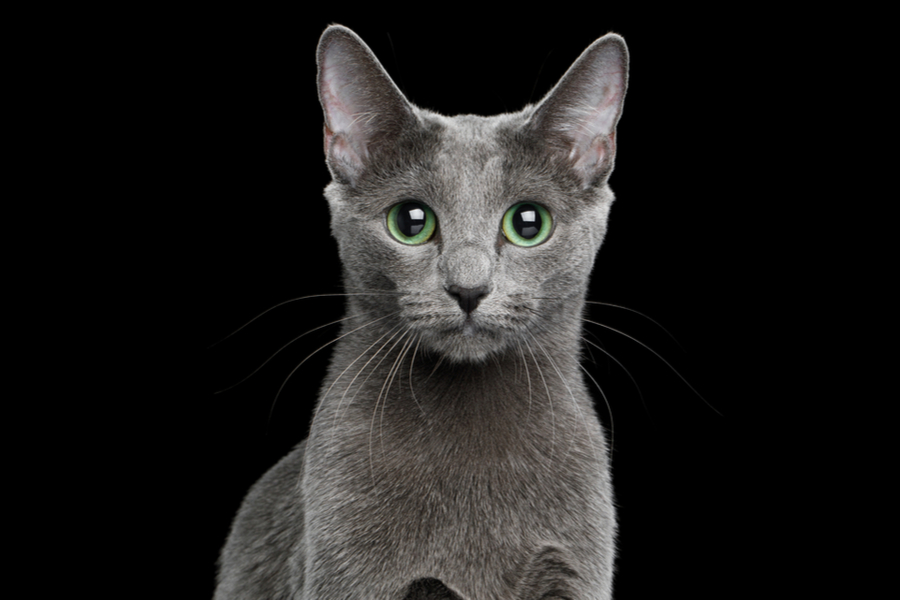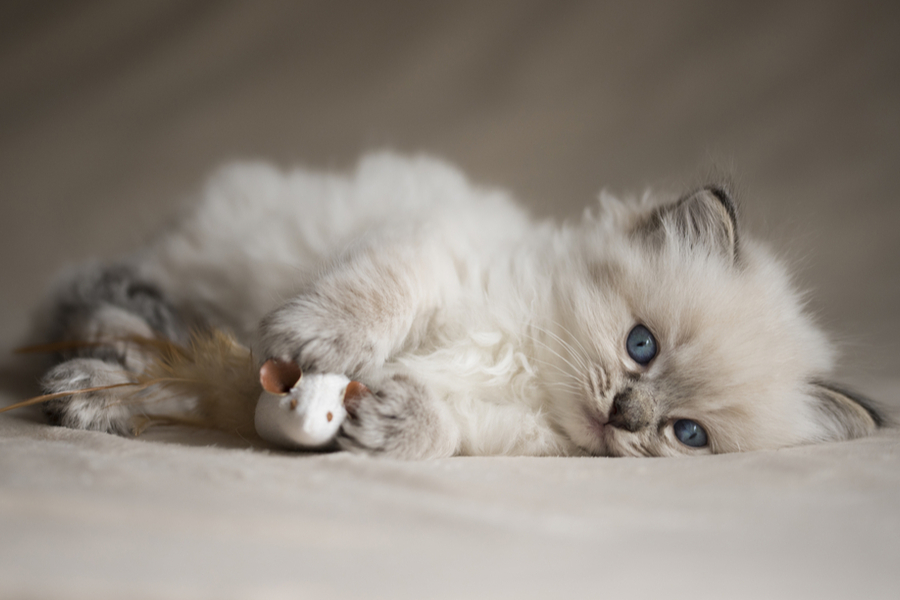Average sizes and life expectancy for this breed:
Bloodhounds, also known as “Sleuth Hounds” are large, distinct-looking dogs that are highly capable of tracking down prey across vast distances and even through water, thanks to their incredibly acute sense of smell. These devoted, noble canines were originally bred to hunt deer and wild boar across Europe since the Middle Ages. Even today, they are utilised by law enforcement and search and rescue teams. In fact, their scenting skills are so good that their “testimony” is recognised and admissible in a court of law. These charming dogs hunt together by scent known as Sagaces, from the root word “sagacious”, which refers to the qualities of sound judgment and keen discernment.
These gorgeous hounds are affectionate and gentle, but they are far from lazy! Bloodhounds can follow a scent trail for long distances, so they require plenty of exercise and mental stimulation to remain happy. That said, they also enjoy lounging or napping on a sun porch with their favourite people. These dogs can make wonderful canine companions for motivated and active owners however, they do require specific care. For this reason, it’s essential that you understand the needs of these dogs before committing to adding one to your family.
While Bloodhounds may not be everyone’s cup of tea because of their distinctive hound odour, as well as their boundless endurance and energy, with the right family and the right training, these hounds can make sensitive, kind, and tolerant pets that get along with both children and other animals.
See available puppies




Known as the father of all scent hounds, Bloodhounds are believed to have originated from Western Europe, first developed in France by the monks of Abbey St. Hubert during the 12th century. They were highly prized by these monks because of their strength, stamina, and dignified appearance. The breed was renamed Chien St. Hubert to Bloodhound in the 14th century. They were given this name due to their pure bloodlines.
For many years, Bloodhounds worked together with hunters tracking both humans and animals in difficult terrains and environments. In fact, according to Medieval stories, these dogs were used to track both Robert the Bruce and William Wallace when they fled from their enemies. In Scotland, Bloodhounds were referred to as Sleuth Hounds and used to seek out cattle thieves up until the end of the 16th century.
More recently, they have also assisted with drug searches because of their impressive sense of smell, which is estimated to be 3 million times stronger than a human’s sense of smell!
The first records of these dogs date from around the 13th century on English shores, but the breed may have been around for a lot longer than that. Robert Boyle, a scientist, wrote a credited paper by the 17th century describing Bloodhounds’ traits and their effectiveness in the field. Boyle was impressed by their skills at tracking down prey with their scenting skills. However, fox hunting with Beagles became popular, so the sport of deer hunting declined together with the popularity of the Bloodhounds. During World War II, Bloodhounds nearly died out all together in Britain. Many were exported to North America and Europe, however, thanks to the dedication of several breed enthusiasts, the Bloodhound return to the UK in the 20th century as imports and have been steadily increasing in popularity since then.
Nowadays, these dignified dogs are still highly prized for their tracking abilities. They also make wonderful canine companions for individuals with active lifestyles, who are willing to put plenty of effort into training.


These are large and impressive-looking canines that boast a noble and dignified expression. While they are frequently described as “sad-looking”, Bloodhounds also give the impression of wisdom and power. They are easily recognisable because of their large heads, well-muscled bodies, and long, drooping ears. Bloodhounds also have loose skin that forms folds and creases around the face and body, which provides them with their well-known forlorn look.
The Bloodhound’s head is fairly long and narrow in comparison to body size, and the muzzle tapers a little from the temples. Their forefaces are long, with a defined stop. These dogs have distinct wrinkles and folds on their faces, as well as large, black noses with open nostrils. Their eyes are medium-sized and dark brown or hazel in colour. Eyesight should never be impeded by the skin folds.
Their necks are well-muscled and long with sloping shoulders. The chest is well-let-down between their straight front legs, and their ribs are well-sprung. Bloodhounds have a solid back and somewhat arched loins. Their power comes from their hindquarters, which are well-muscled with well-developed thighs and second thighs.
These dogs have robust, well-knuckled feet and long tails that are thicker at the base and taper towards the tip. The tail is carried high when the dog is on the move but it should never curl over the back.
Bloodhounds have a short, smooth coat that is extremely weather-resistant. Accepted coat colours according to the UK Kennel Club are as follows: Black and tan, Liver and tan, and Red.
Darker coloured Bloodhounds sometimes have lighter or badger-coloured hair peppered through their coats, sometimes flecked with white. These dogs are permitted to have small amounts of white on their chest, feet, and the tip of the tail.
Affectionate by nature, Bloodhounds are gentle, calm, sensitive, and a little reserved. They are known to be incredibly patient with children which makes them great family pets for the right owners. Saying that, these dogs are also very independent-minded, stubborn, and determined so consistent training is a must to get the most out of these dogs. Don’t forget to offer them plenty of opportunities to exercise and keep their sharp minds stimulated with regular games, puzzles, and fun outings.
Bloodhounds are gentle giants. However, there are a few drawbacks to sharing a home with these dogs that you need to be aware of. They are known to be big droolers and snore loudly, however, many owners find these traits endearing! These dogs are not big barkers, only vocalising when needed. But they do have a very distinct low, rich, and deep bark. They have quite a wide vocal repertoire compared to other dog breeds which include whines, bays, and howls, especially when excited or bored.
Bloodhounds have a very strong prey drive so it’s best to keep them on a lead because they are likely to dash off if they catch a whiff of an enticing scent!


Bloodhounds are highly intelligent dogs. However, they are also independent thinkers and stubborn. This can make them a challenge to train, especially for novice owners that may not fully understand their unique needs. For this reason, these dogs are best suited to more experienced canine owners. Time, patience, and persistence are the keys to training a Bloodhound. If you remain consistent, you will be rewarded with a devoted, loving companion. Puppy training classes are a great idea for this breed.
Bloodhounds are willful but they are also sensitive creatures. So, positive reinforcement works best. Start with short, fun training sessions that incorporate games (especially those that utilise the strong scenting ability of this breed). These dogs are likely to ignore you or even become withdrawn if you use harsh training methods. Also, bear in mind that Bloodhounds mature slowly, so expect your puppy to remain a bit boisterous and clumsy until the age of two! Recall training is extremely important for these dogs because of their strong prey drives. You may also want to invest in a few chewable toys because they are known to be curious canines that have a tendency to eat anything in sight, which can include remote controls and towels!
Bloodhounds have short, naturally glossy coats which are relatively easy to maintain. They are also highly weather-resistant as water literally runs off the body, making them an ideal walking or jogging companion even when it is raining. Brush your dog's coat at least once a week with a hound glove or rubber grooming mitt to eliminate dead hairs and keep the coat in good condition. Just like all dog breeds, they shed more during Spring and Autumn so you may want to brush more often during these periods. Bathing should only be done once a month or so. Ensure you use a dog-specific shampoo to avoid drying out the skin.
An important routine that you have to do regularly is to check their ears to make sure they remain dry and free of any debris or foreign objects. Bloodhounds have long, drooping ears, and if moisture builds up inside the ear canal, it can lead to yeast infections, which can be hard to clear up. Clean their long ears using clean cotton or a cloth moistened with a vet-approved ear cleanser once a week or so. If you notice your dog regularly scratching their ears or shaking their head, speak to your vet because these are signs of infection.
Bloodhound’s nails must be trimmed once or twice a month or as needed. This way, their nails will remain in good physical shape. Ensure that you do this often to prevent very long nails as these can be painful and uncomfortable for your Bloodhound.
For their dental hygiene, aim to brush their teeth every day because this is the best way to prevent tooth and gum disease and bad breath in dogs. However, twice a week brushing is good enough to avoid bacteria and tartar build-up. Consult your vet on what products work best to clean their teeth, mouth, gums, and tongue.
Furthermore, inspect their whole body as you clean and groom them to check for any wounds, inflammations, rashes, and other signs that your Bloodhound may have an infection or other health condition. Make sure to check their eyes as well. They should be clean and clear without irritation, redness, or discharge.


The Bloodhound’s average life expectancy is around 9-10 years, provided that these large hounds are properly cared for and fed a high-quality diet that meets their age and nutritional needs. However, they are prone to developing a number of health issues so you should ensure that you only purchase a puppy from a licensed breeder. This will ensure they have been appropriately weaned and cared for. A good breeder will also be able to perform tests to check for any underlying health problems.
Bloodhounds may suffer from the health issues listed below:
Bloodhounds tend to adore children and are generally extremely tolerant of them. However, their large size and high energy can cause them to accidentally knock over a young child. Therefore, all interactions between a Bloodhound and a child should be supervised at all times.
Bloodhounds are fairly easygoing so they can be friendly with other dogs and cats, especially if they have grown up together. Remember to introduce new pets gradually and in a controlled environment for best results.


We can connect you with Breeders that are specialized in this particular breed.
See available puppies

Need some advice?
Whether you're a first time pet owner, an experienced pet owner, a new or long-time breeder, or just curious about pets, we've got you covered!

January 17, 2024
What Is The Personality Of Russian Blue Cats?
Russian Blue cats are most known for their distinctive shimmery blue-silver coat and piercing green eyes. However, this breed’s calm and gentle temperament is what makes them shine the most in the feline world.

January 17, 2024
10 Facts About Russian Blue Cat Breed
Russian Blues are one of the most aesthetically stunning cat breeds, with a gorgeous plush silvery coat and vibrant green eyes. However, it’s not only their appearance that is beautiful; their nature is too.

January 17, 2024
How To Choose The Right Cat Breed for You
Cats can make the most fantastic animal companions; they are adorable, friendly, and loving. However, not all felines are created equal. There are many different breeds, of which each has its unique personality traits.
Need some help?
Contact us to speak to our friendly advisor, who will gladly help you find your dream pet!



We are registered in England and Wales under registration number 12568840,
and our registered office is at 58-60 Kensington Church Street, W8 4DB London, England.
© 2023 The Pedigree Paws